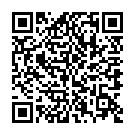|
|
|
| Module code: MST2.ATO |
|
|
3V+1P (4 hours per week) |
|
5 |
| Semester: 4 |
| Mandatory course: yes |
Language of instruction:
German |
Assessment:
Written exam 120 min.
[updated 06.11.2020]
|
MST2.ATO (P231-0025) Mechatronics and Sensor Technology, Bachelor, ASPO 01.10.2019
, semester 4, mandatory course
MST2.ATO (P231-0025) Mechatronics and Sensor Technology, Bachelor, ASPO 01.10.2020
, semester 4, mandatory course
Suitable for exchange students (learning agreement)
|
60 class hours (= 45 clock hours) over a 15-week period.
The total student study time is 150 hours (equivalent to 5 ECTS credits).
There are therefore 105 hours available for class preparation and follow-up work and exam preparation.
|
Recommended prerequisites (modules):
MST2.PH1 Physics 1
MST2.PH2 Physics 2
MST2.PH3 Physics 3
[updated 02.03.2021]
|
Recommended as prerequisite for:
|
Module coordinator:
Prof. Dr.-Ing. John Heppe |
Lecturer:
Prof. Dr. Günter Schultes
[updated 02.03.2021]
|
Learning outcomes:
The objective of this course is to teach students about atomic models and quantum mechanics. Based on this, students will be introduced to the structure of solids and their physical properties. With the help of a practical experiment on X-ray diffraction and the demonstration of typical thin-film technology systems and devices, students will experience and learn about the practical relevance of solid state physics.
[updated 06.11.2020]
|
Module content:
1. Basic concepts
- Atomic structure and the Bohr model of the atom
- Wave-particle duality
- Concepts of quantum mechanics, uncertainty principle, wave functions, Schrödinger equation
2. Structure of a crystalline solid
- Chemical bonding in solids
- Crystals and lattice structures
- Tests with X-rays (laboratory test)
- Lattice disorder and phonons
3. Electrical, magnetic and thermal properties of solids
- Solid carriers
- The band theory of solid bodies
- Electrical conduction in metals and semiconductors
- Dia-, para- and ferromagnetism
- Magnetic resonance imaging
- Low temperatures, superconductivity
4. Applied solid state physics
- Research work on: Highly sensitive nanoscale thin films for pressure and force sensors
[updated 06.11.2020]
|
Teaching methods/Media:
Lecture, exercises, practical experiment X-ray diffraction
[updated 06.11.2020]
|
Recommended or required reading:
P. Wellmann, Materialien der Elektronik und Energietechnik, Springer (e-book)
E. Ivers-Tiffee, W.v. Mönch, Werkstoffe der Elektrotechnik, Teubner, (e-book)
R. Huebener, Leiter-Halbleiter-Supraleiter, Springer, (e-book)
R. Tilley, Understanding Solids, Wiley
C. Kittel, Einführung in die Festkörperphysik; Verlag Oldenbourg
[updated 06.11.2020]
|


